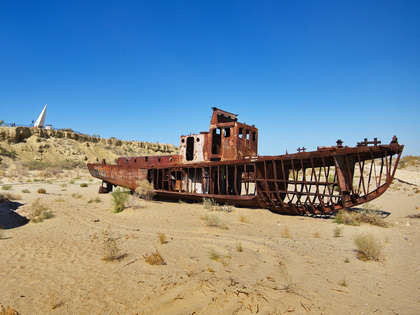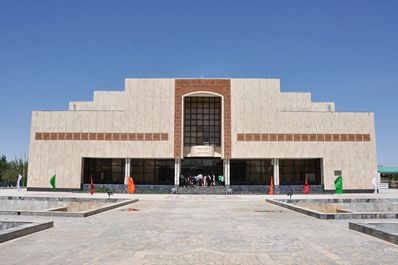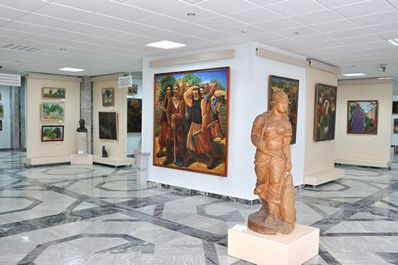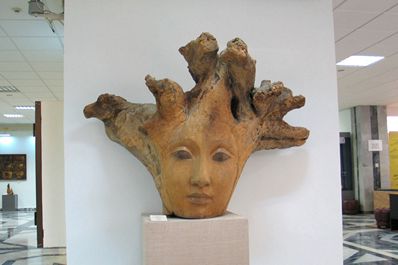Nukus, Karakalpakstan

Things to Do and Sightseeing Tours in Nukus
One of the main places of interest in Nukus is the Museum of Art named after I.V. Savitsky, which contains more than 50 000 paintings and other works of art, banned during the Soviet period. Thanks to the efforts of Moscow artist Igor Vitalievich Savitsky the Russian Avant-garde and Post Avant-garde heritage was saved from total destruction by the Soviet power. Only in 1991, when Uzbekistan obtained its independence, the Nukus Museum of Art named after I.V. Savitsky gained its real recognition and popularity. And today everyone who wishes can get acquainted with the unknown art of the 20th century.
Main article about Nukus Museum of Art named after Savitsky
Also you can request One day tour to Nukus: Museum of Art named after I.V. Savitsky
Nukus is the capital of the Republic of Karakalpakstan. Nukus is located in the north of Uzbekistan near the Aral Sea, surrounded by three deserts - the Kara Kum, Kyzyl Kum and Ustyurt.
In 2012 Nukus celebrated the 80th anniversary. It is very young, in comparison with thousand-year history of other cities in Uzbekistan, but in spite of this the land, on which the city is located, has an ancient cultural stratum, which according to archaeology researches belongs to the 4th century BC - 4th century AD.
Many centuries ago the ancient city Shurcha was on the site of current Nukus. Now this ancient town can be seen in the northwestern part of Nukus. According to historians, the town was one of the defensive fortresses, protecting the border of the ancient state of Khorezm and controlling the waterway on Amu Darya. Local people say that until recently remnants of walls and towers could be found in the area of Shurcha town.
At the end of the 19th century, when Russia seized the power in the Khiva Khanate, Petro-Aleksandrovsk (Turtkul) became the center of Amu Darya division. At that time Nukus was a little aul (village). It was decided to build a large military fort on the site of village, which was completed in 1874. Soon the population of the fortress, mostly constisted of Kazakhs, began to build hospitals, schools and administrative buildings around fortress.
When the Soviet authority came to power, Turtkul town became the administrative center of Karakalpakstan autonomous region. But in the 20-es the threat that Amu Darya would flush Turtkul, located 12 kilometers from the river bank, caused to move the center of Karakalpakstan region to Nukus. Officially, the town was born in 1932. Now it is the economic, administrative, political and cultural center of Karakalpakstan. The city is decorated with modern buildings, boulevards, public gardens and parks. The main sight is the Art Museum of Karakalpakstan named after Savitsky. Savitsky's collection attracts and amazes various artists and even heads of state around the world. Besides the museum Nukus and the surrounding area has many unique archaeological, historical and cultural monuments.
In outskirts of Nukus, in Khodjeyli town (that means "the land of the Pilgrims") there is a necropolis Mizdahkan, the tomb of Adam (as Muslims call it, although scientists believe that in fact it is the burial place of Gayomarda (Gayamaretana), the first man according to Zoroastrian mythology).










